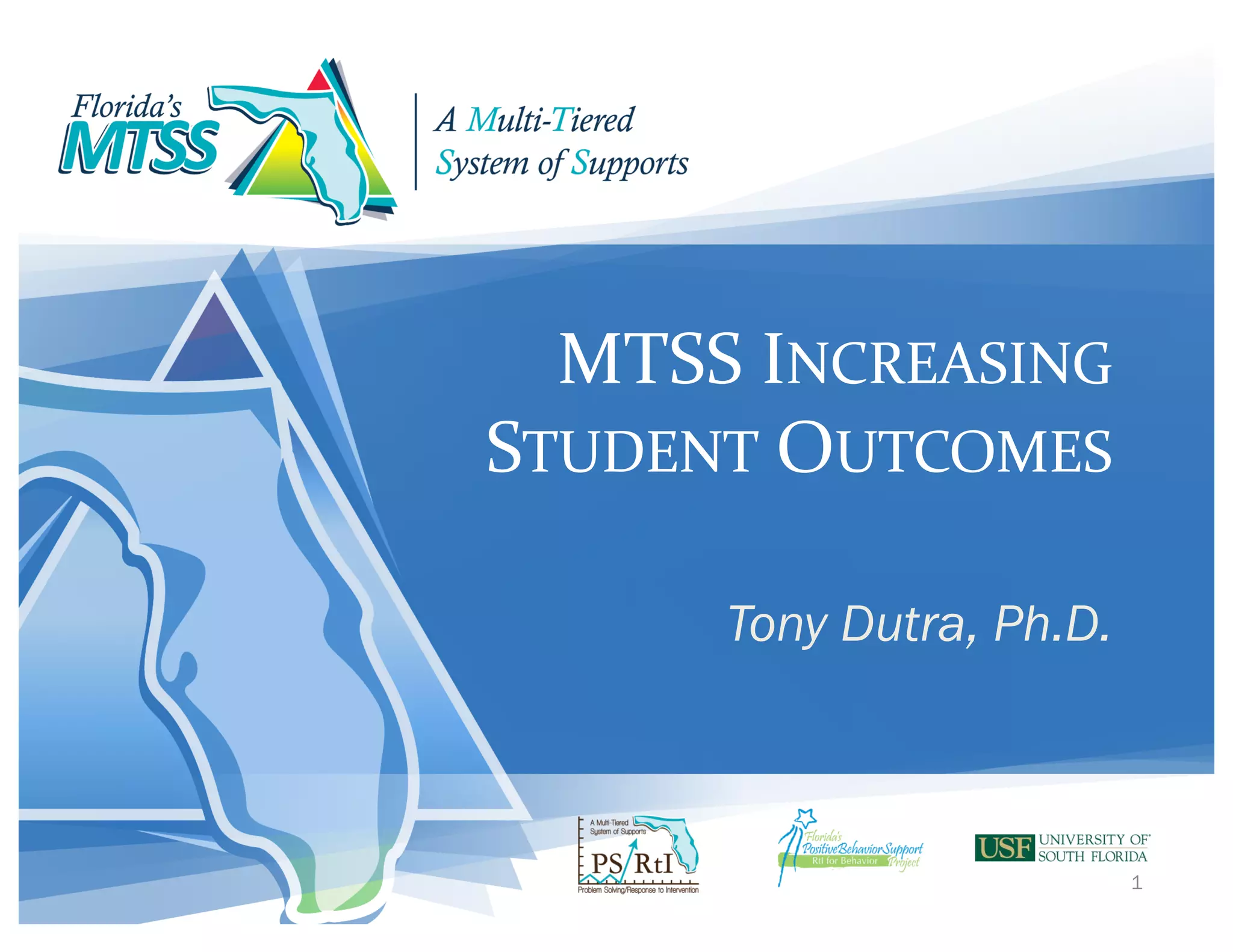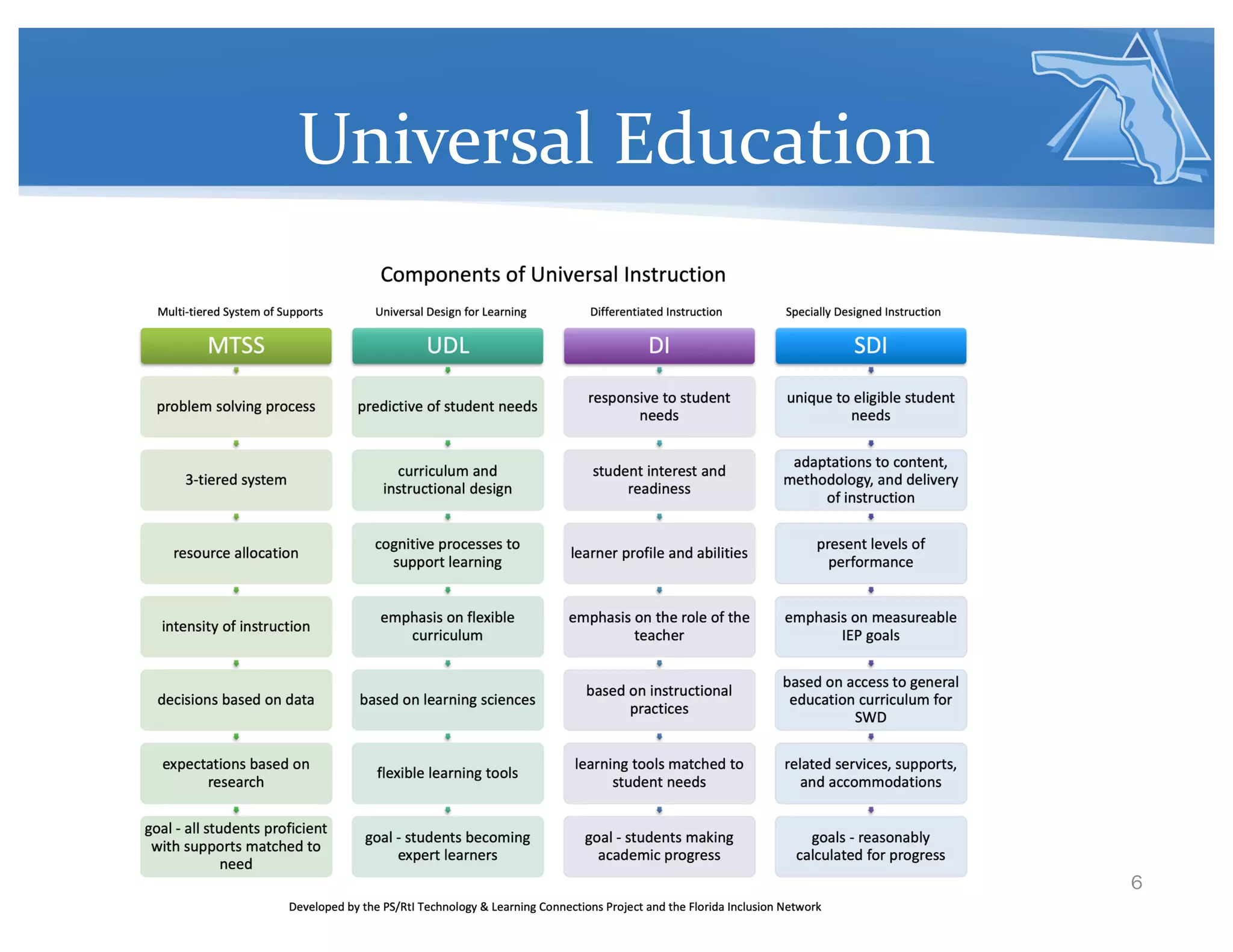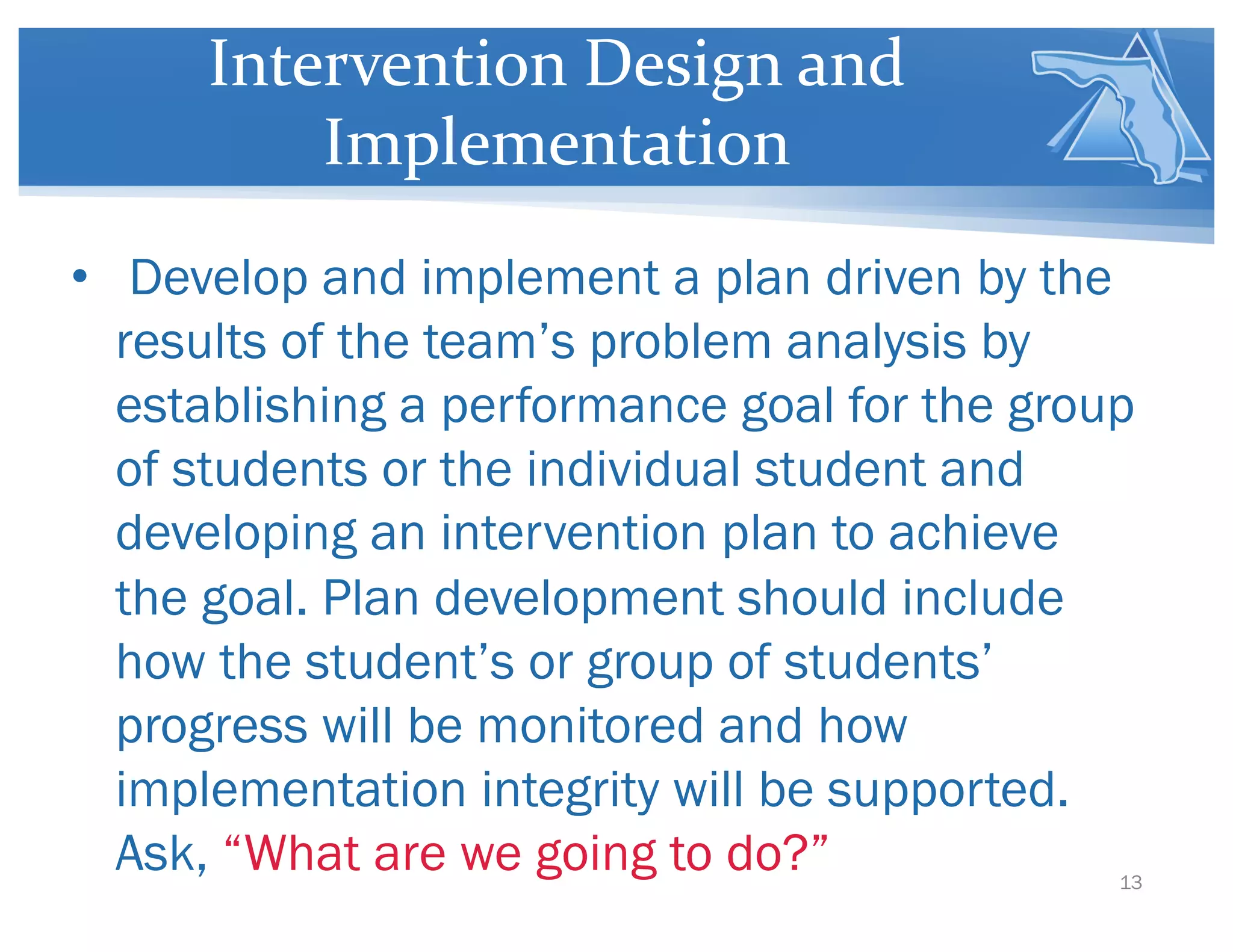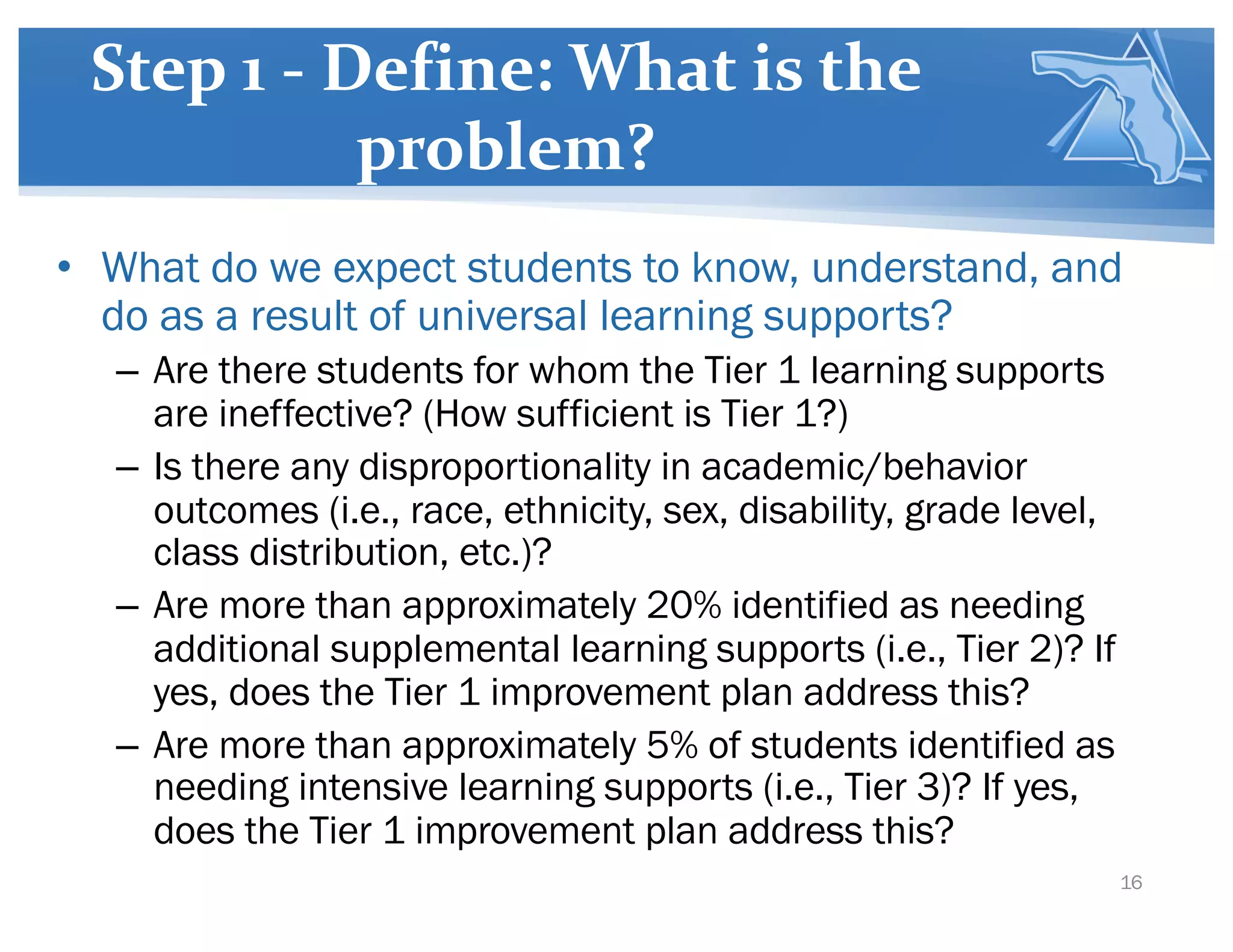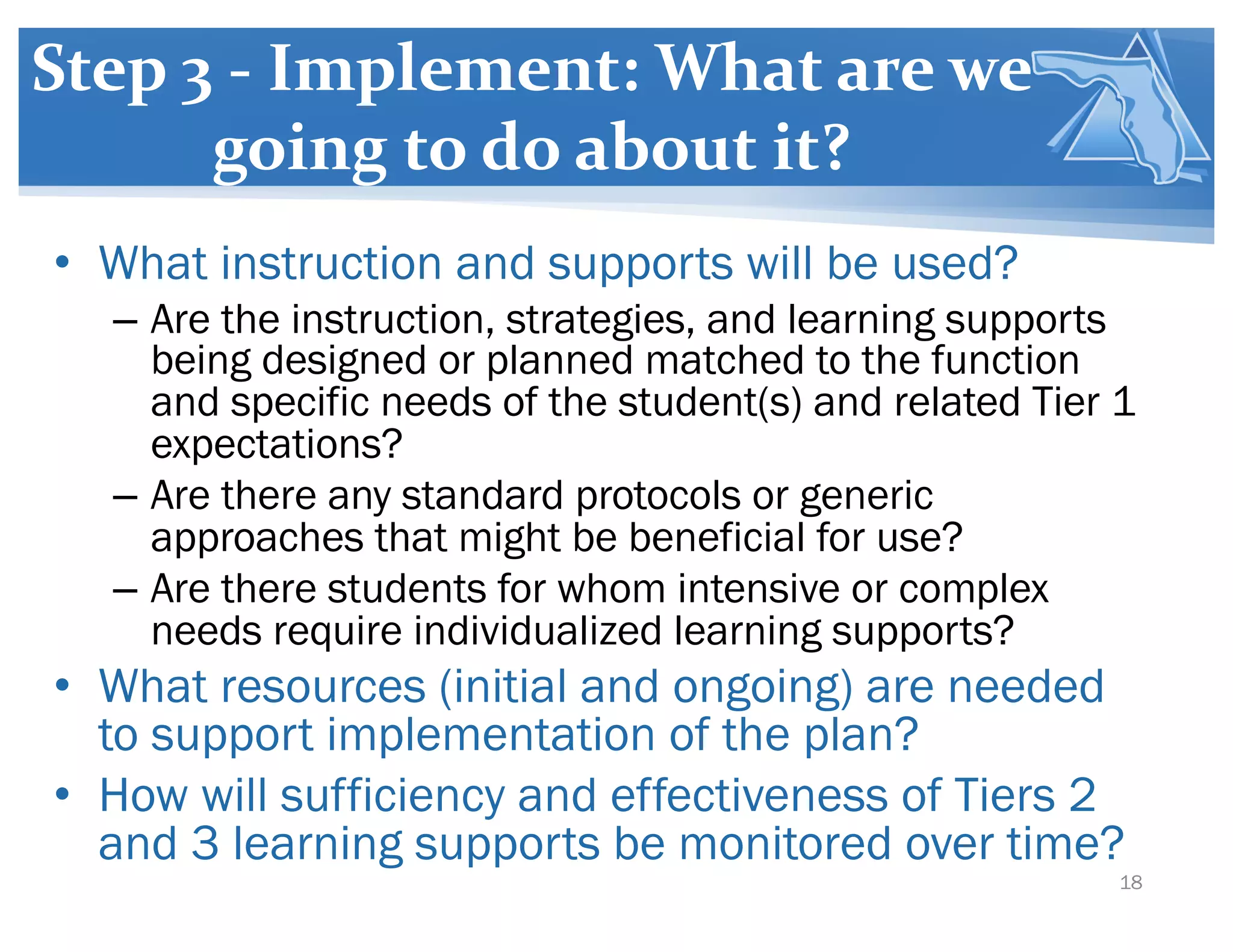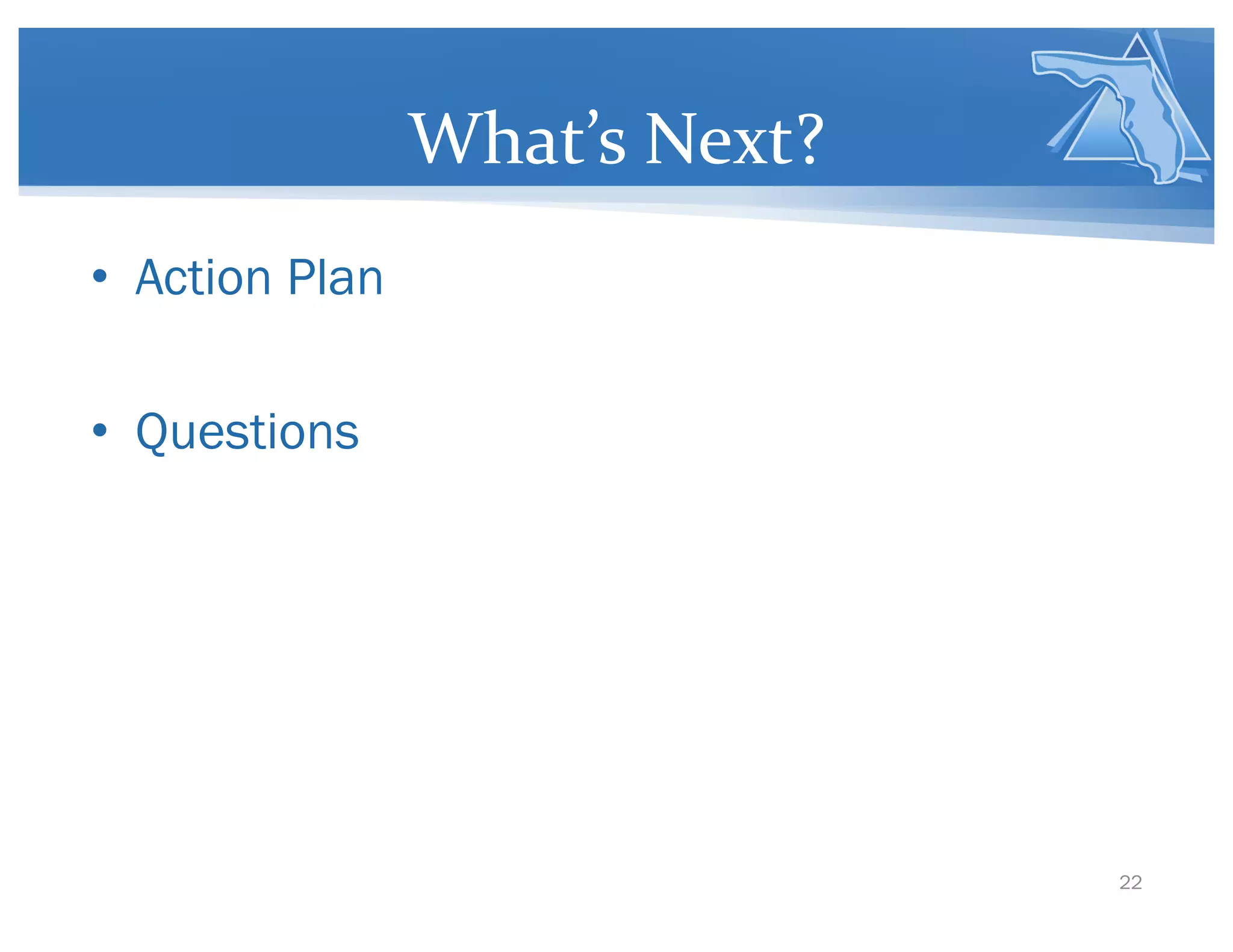The document discusses MTSS (Multi-Tiered Systems of Support) and its role in improving student outcomes. It outlines the essential components of MTSS, which include multiple tiers of instruction and intervention, a problem-solving process using data-driven decision making, ongoing professional development and leadership. It then describes the three tiers of instruction: Tier 1 is universal supports for all students, Tier 2 is supplemental targeted interventions, and Tier 3 is intensive individualized interventions. The document also presents the problem-solving process and the Guiding Tools for Instructional Problem Solving (GTIPS) framework for integrating the tiers through collaborative problem identification, analysis, intervention design and evaluation using data.
